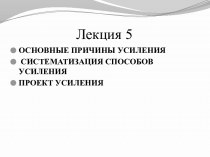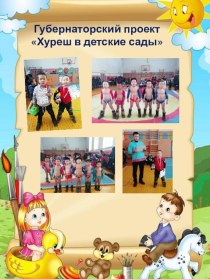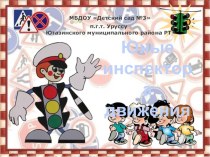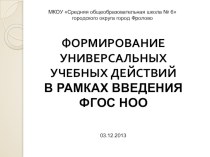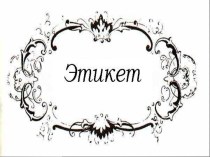- Главная
- Разное
- Бизнес и предпринимательство
- Образование
- Развлечения
- Государство
- Спорт
- Графика
- Культурология
- Еда и кулинария
- Лингвистика
- Религиоведение
- Черчение
- Физкультура
- ИЗО
- Психология
- Социология
- Английский язык
- Астрономия
- Алгебра
- Биология
- География
- Геометрия
- Детские презентации
- Информатика
- История
- Литература
- Маркетинг
- Математика
- Медицина
- Менеджмент
- Музыка
- МХК
- Немецкий язык
- ОБЖ
- Обществознание
- Окружающий мир
- Педагогика
- Русский язык
- Технология
- Физика
- Философия
- Химия
- Шаблоны, картинки для презентаций
- Экология
- Экономика
- Юриспруденция
Что такое findslide.org?
FindSlide.org - это сайт презентаций, докладов, шаблонов в формате PowerPoint.
Обратная связь
Email: Нажмите что бы посмотреть
Презентация на тему Social psychological functions of management
Содержание
- 2. POWER
- 3. Power Definition, Features Potential by the possessor Interconnection
- 4. Power Kinds
- 5. Power Legitimate power –comes from the belief
- 6. Power Expert power – This is based
- 7. Power Sources PowerPersonal basisOrganizational basisExpert powerPower of
- 8. Power StagingExpert powerPower of exampleRight for power Power
- 9. Relationship between power sources Choice of the influencing strategyInfluencing upon the others PowerPersonal basisOrganizational basisPower Staging
- 10. Leader vs. Manager
- 11. Leader vs. Manager
- 12. Effective leadershipMost effective combination of all the
- 13. Effective leadershipAlso dependent on:Organizational culture Used technologies
- 14. Effective leader TrendsTrend to support the employees
- 15. Effective leader Managing abilitiesManaging attention Managing meaningsManaging trust and confidenceSelf-management
- 16. Studying LeadershipKind 2. Analysis of the leadership
- 17. Leadership BehaviorPunishment for working fulfillment level. Compensation
- 18. Leadership StylesMain characteristics of the manager behaviour during the management process
- 19. Leadership StylesDefined bz manager personality Defined bz the personnel peculiarities
- 20. Contemporary Perspectives On LeadershipCharismatic leadershipTransactional leadershipTransformational leadershipPost-heroic leadership
- 21. Leadership Kindsdominant and exceptionally self-confident, with a
- 22. Leadership Kindstraditional management through business transactions leaders
- 23. Leadership Kindsmoves beyond transactional leadershiptransforms a vision
- 24. Leadership Kindsgenerating excitement - three ways they
- 25. Leadership Kindseven great top executives can’t solve
- 26. Leadership StylesAuthoritarianLiberal (club)Democratic
- 27. Leadership StylesUse of authority by managers AuthocraticDemocraticLiberalFreedom of Subordinates
- 28. Leadership StylesImportantMotivationStyleCharacteristicsAuthoritarianDemocratic Liberal (club)DelegationDemands Results only Results
- 29. Managerial gridConcern for peopleConcern for production
- 30. Managerial gridConcern for peopleConcern for productionBlake Mouton GridHighLowHighHighCountry clubTeam leaderImpoverish Produce or PerishMiddle of the Road
- 31. Situational Theory of LeadershipLeadership style depends on
- 32. Situational Theory of Leadershipleadership perspectives proposing that
- 33. Situational Theory of LeadershipThree factors must be
- 34. Situational Theory of Leadershipfocuses on how leaders
- 35. Situational Theory of Leadershipanswering a series of
- 36. Decision Significance – significance for the success
- 37. Group support for objectives – the degree
- 38. Situational Theory of LeadershipThe leader should:make the
- 39. Situational Theory of LeadershipPath goal framework Appropriateness ofDirective,Supportive,Participative, orAchievement leader behaviorsFollowers’goals andperformance
- 40. DelegatingSituational Theory of LeadershipLeadership directive behaviourLeaderhip supportive behaviour HighLowHighHighDevelopment level of employeesd4d3d2d1SupportingCoachingDirecting
- 41. Situational Theory of LeadershipDevelopment level of employeesMaturity of the team
- 42. Maturity of the Team Working experiencesMaturity in working with one another Psychological maturity
- 43. DelegatingSituational Theory of LeadershipLeadership directive behaviourLeaderhip supportive behaviour HighLowHighHighDevelopment level of employeesd4d3d2d1SupportingCoachingDirecting
- 44. DelegatingSituational Theory of LeadershipLeadership directive behaviourLeaderhip supportive behaviour HighLowHighHighSupportingCoachingDirecting Haus and Mitchell
- 45. Situational Theory of Leadership
- 46. M1 - They generally lack the specific
- 47. M3 - They are experienced and able
- 48. Situational Theory of Leadership
- 49. Fiedler’s Analysis Of Situations
- 50. Rensis Likert The difference in the
- 51. Rensis Likert
- 52. Effectiveness of ManagementManaging TeamsDr. V. ZaremboManagement English Version
- 53. The Contributions Of TeamsEffects onorganizations
- 54. Benefits Of Groups Benefits derived by organizationsgroups
- 55. Benefits Of Groups Benefits derived by membersa
- 56. The New Team EnvironmentDEFINITIONSworking group - collection
- 57. The New Team EnvironmentDEFINITIONSTEAM - small number
- 58. The New Team EnvironmentTypes of teamswork teams
- 59. The New Team EnvironmentTypes of teamsproject and
- 60. The New Team EnvironmentTypes of teamsparallel teams
- 61. The New Team EnvironmentTypes of teamsmanagement teams
- 62. The New Team EnvironmentTraditional environmentTeam environmentManagers determine
- 63. The New Team EnvironmentTraditional environmentTeam environmentJobs are narrowly definedJobs require broad skills and knowledge
- 64. The New Team EnvironmentTraditional environmentTeam environmentCross-training is viewed as inefficientCross-training is the norm
- 65. The New Team EnvironmentTraditional environmentTeam environmentMost information is “management property”Most information is freely shared
- 66. The New Team EnvironmentTraditional environmentTeam environmentTraining for
- 67. The New Team EnvironmentTraditional environmentTeam environmentRisk taking is discouraged and punishedEncourage and support measured risk taking
- 68. The New Team EnvironmentTraditional environmentTeam environmentPeople work alonePeople work together
- 69. The New Team EnvironmentTraditional environmentTeam environmentRewards based
- 70. The New Team EnvironmentTraditional environmentTeam environmentManagers determine “best methods”Everyone works to improve methods and processes
- 71. Team Autonomy ContinuumTraditionalwork groupsSelf-designingteamsQualitycirclesSemi-autonomouswork groupsHighperformancework teamsSelf-managingteams
- 72. The New Team EnvironmentSelf-managed teamsautonomous work groups
- 73. The New Team EnvironmentSelf-managed teamscompared to traditionally
- 74. The New Team EnvironmentSelf-managed teamstraditional work groups
- 75. The New Team EnvironmentSelf-managed teamssemiautonomous work groups
- 76. The New Team EnvironmentSelf-managed teamsself-designing teams -
- 77. How Groups Become TeamsSelf-managed teamsself-designing teams -
- 78. Team shape Team shapeLeadership style
- 79. Team shapeLeadership style Wet sandDesignation, precise instruction
- 80. Team shapeLeadership style Soft clayCoordination, less designation and controlStimulation of personal achievementsTeam shape
- 81. Team shapeLeadership style Fluid concreteLess coordinationStimulation of initiatives and business contacts Team shape
- 82. Team shapeLeadership style Scarlet salesParticipation in
- 83. Скачать презентацию
- 84. Похожие презентации






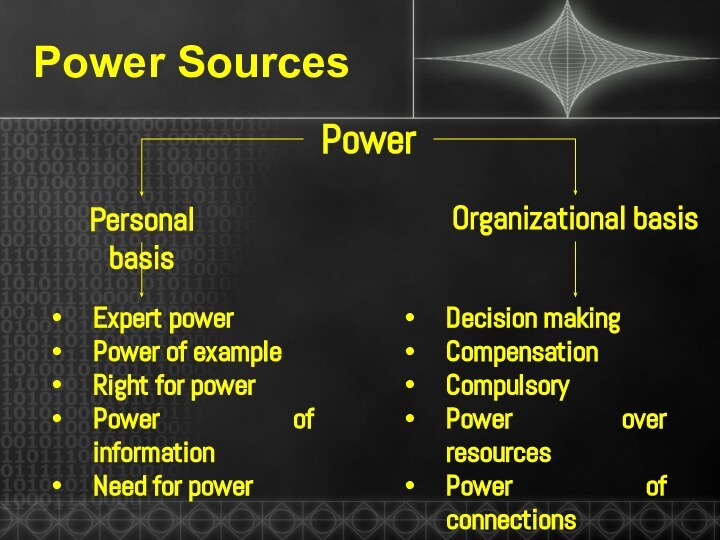
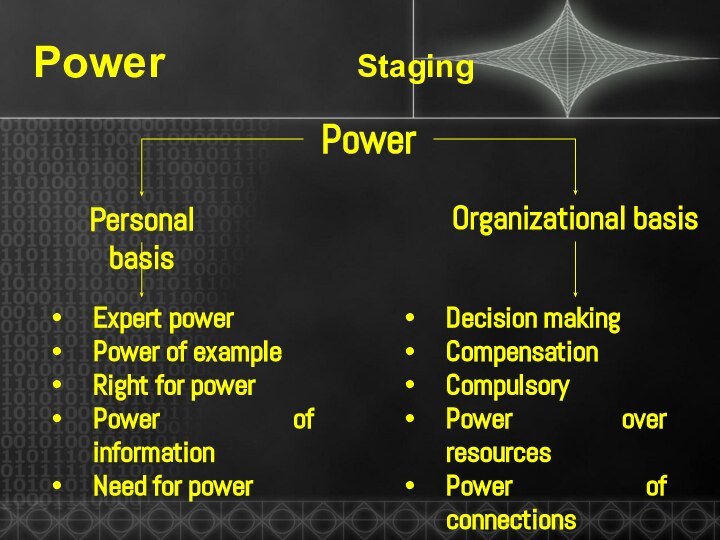
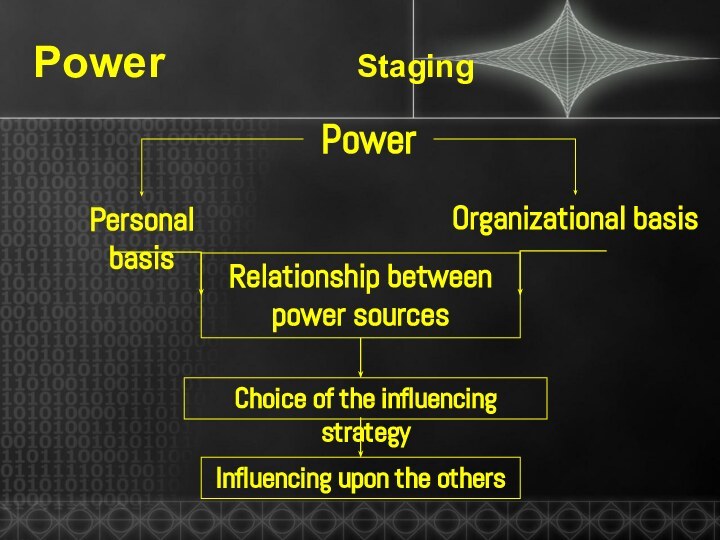
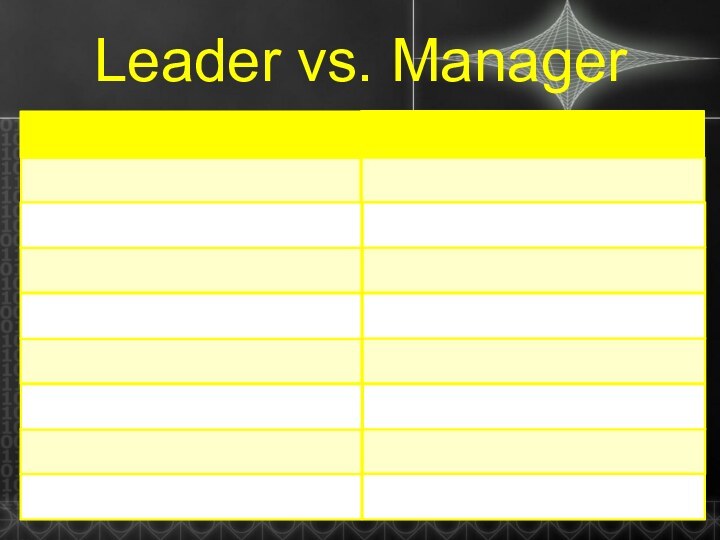
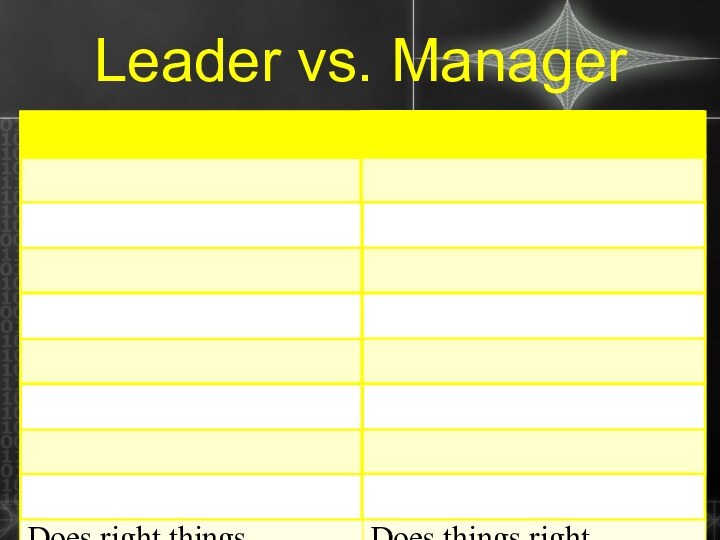
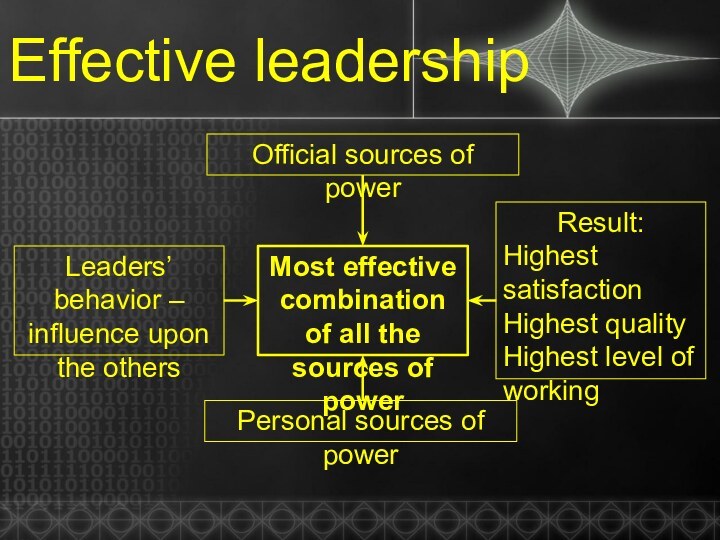
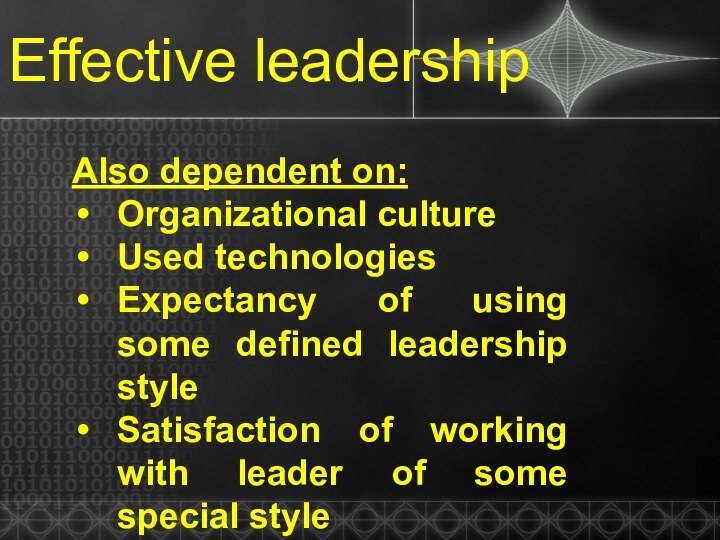


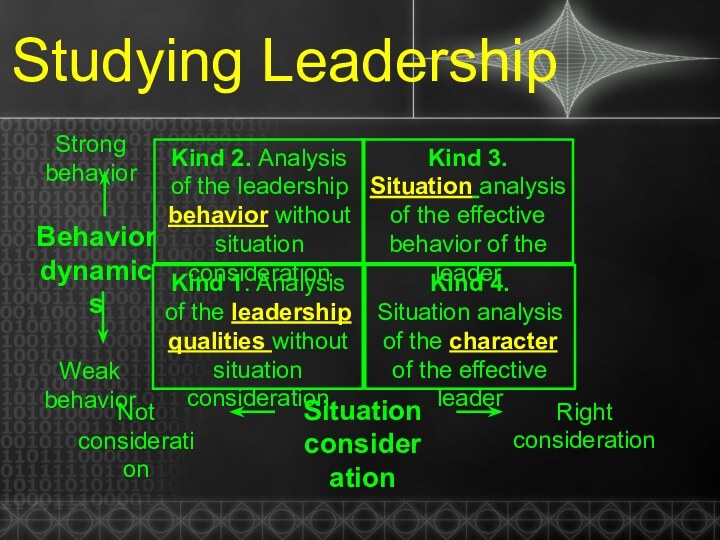
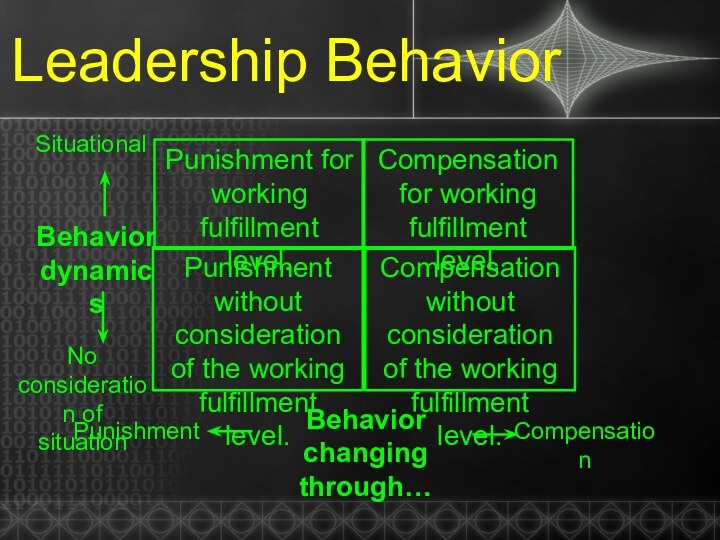
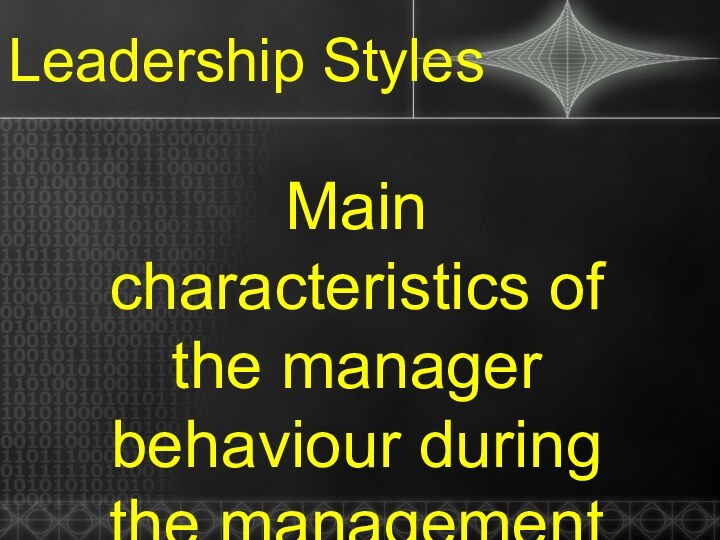

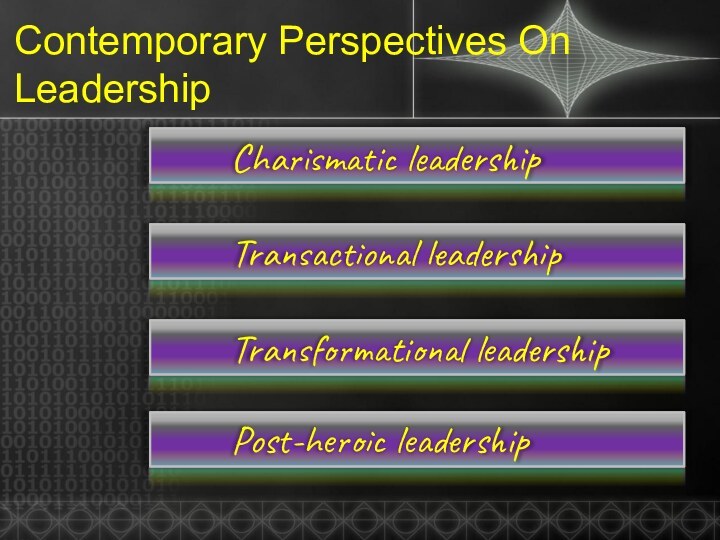
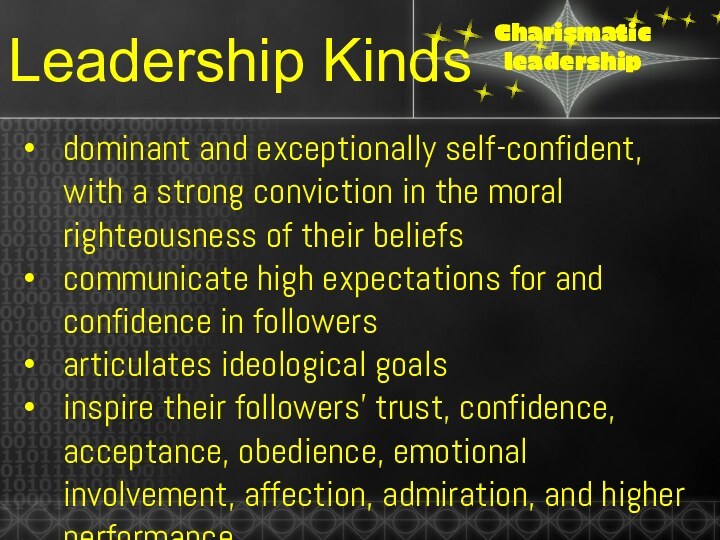
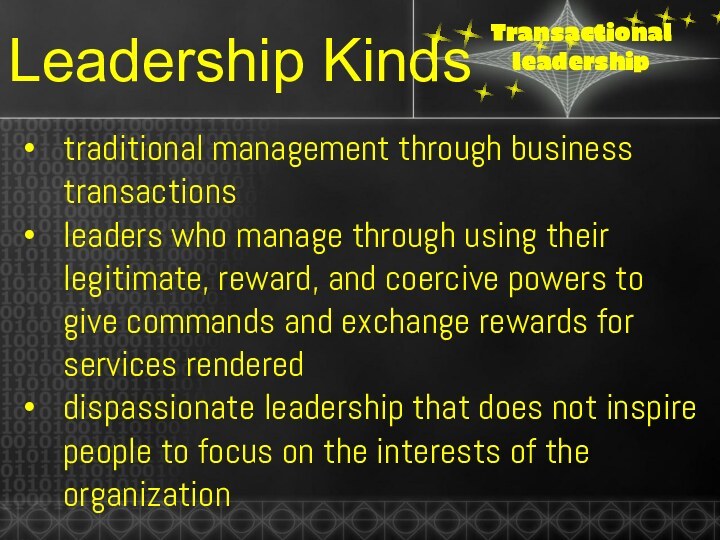
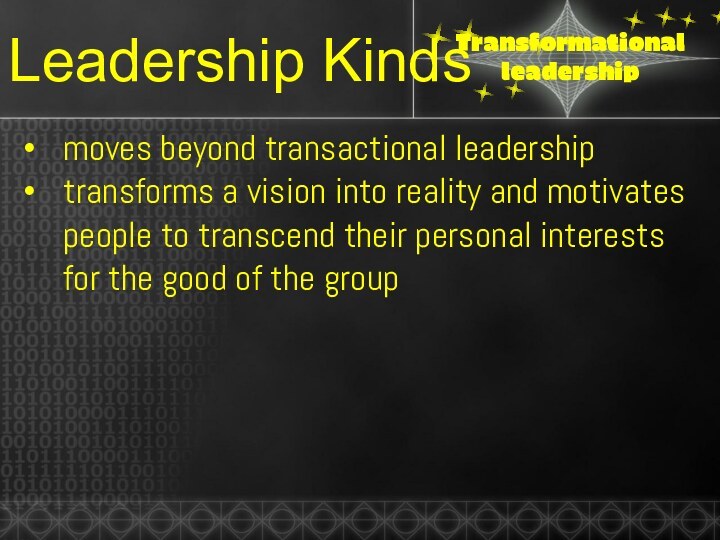
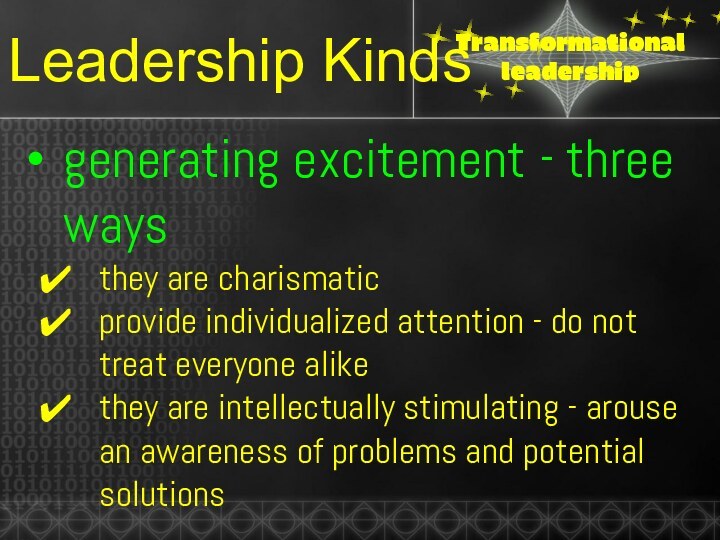

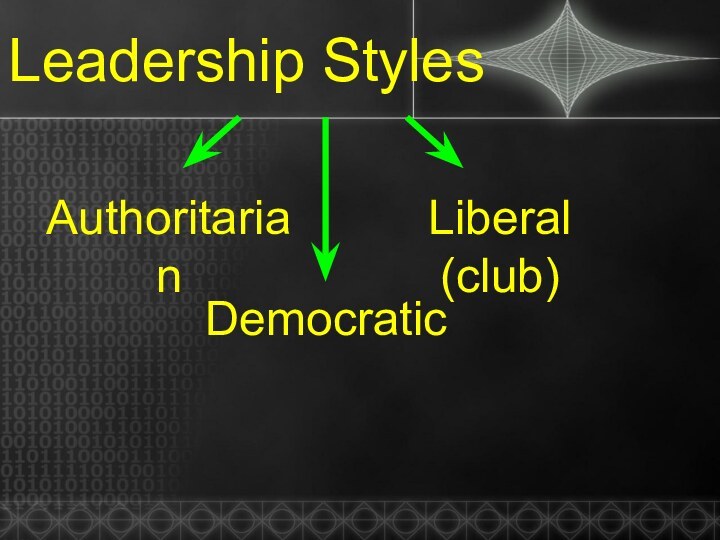

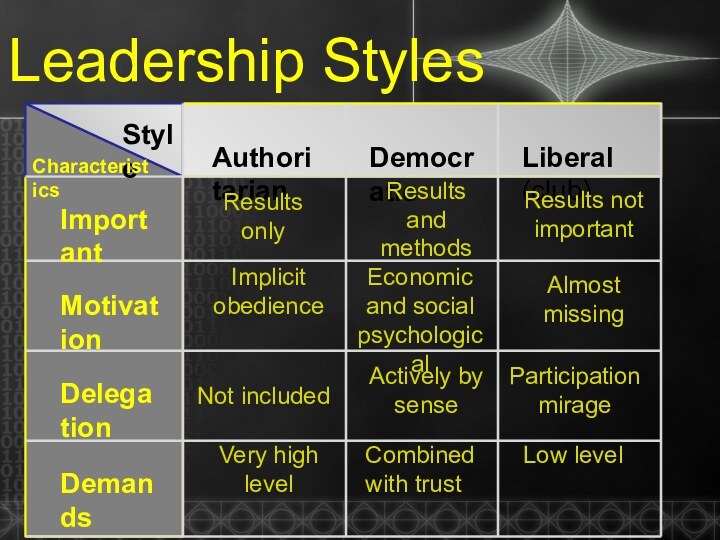
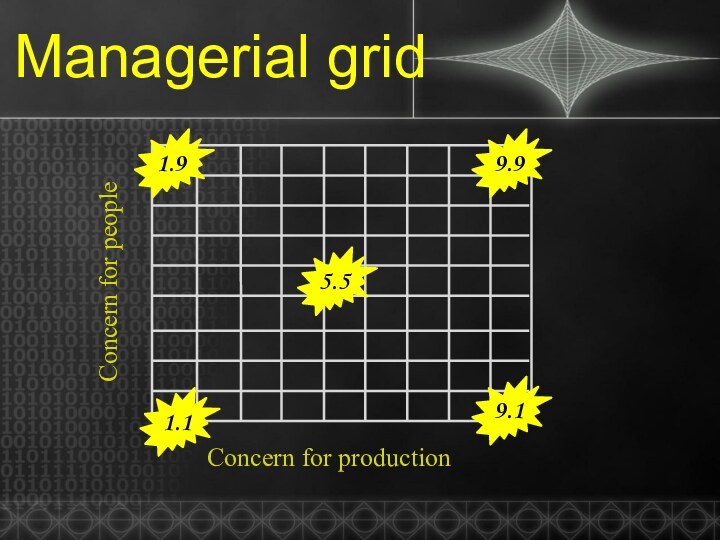
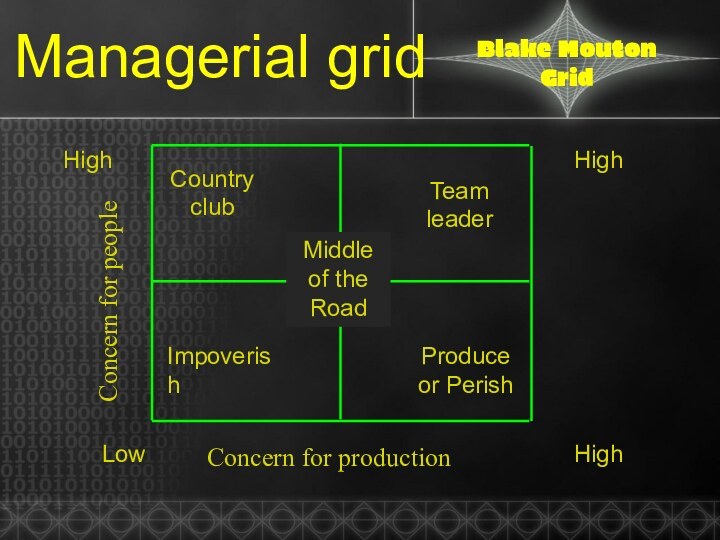
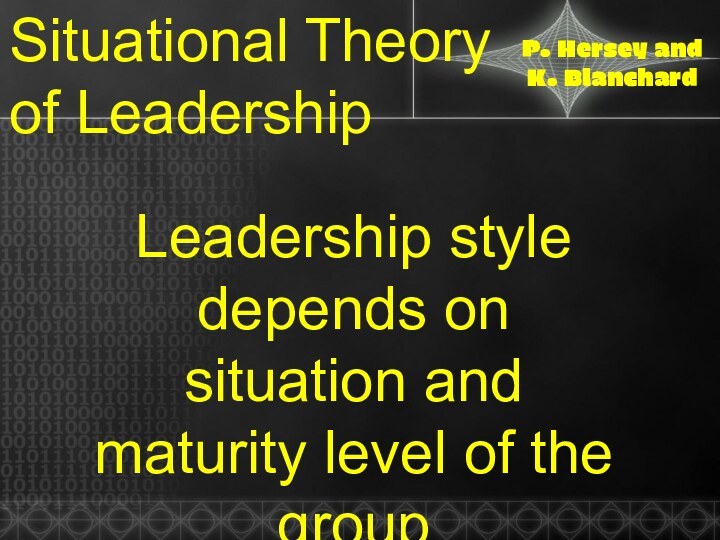

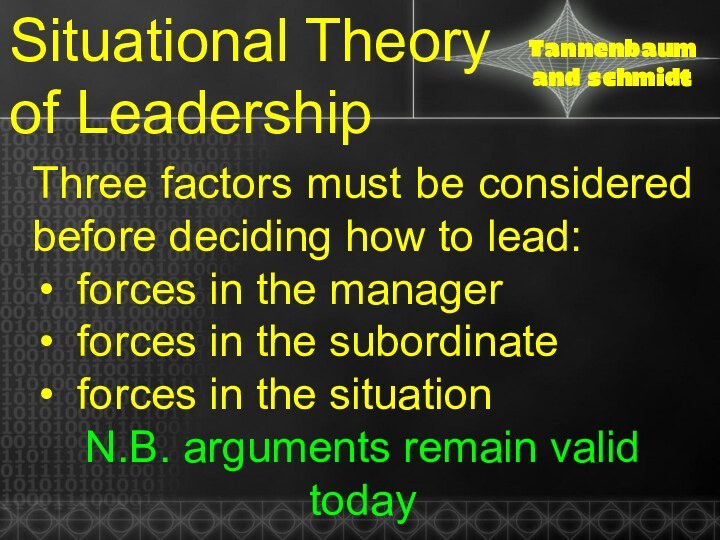
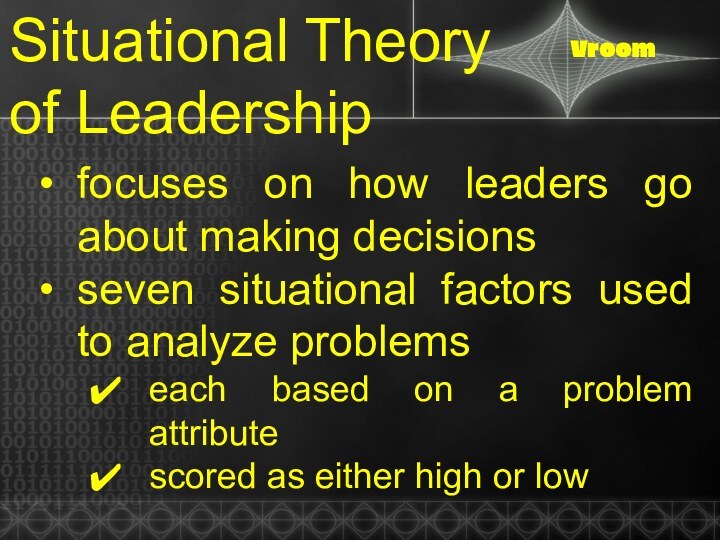

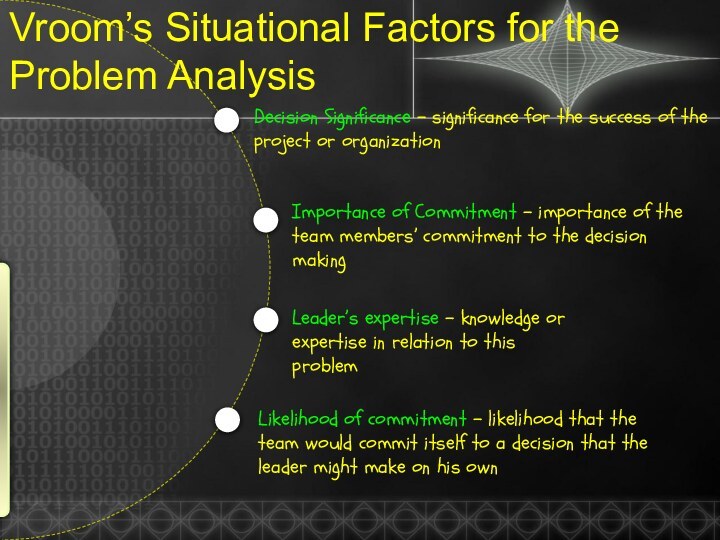
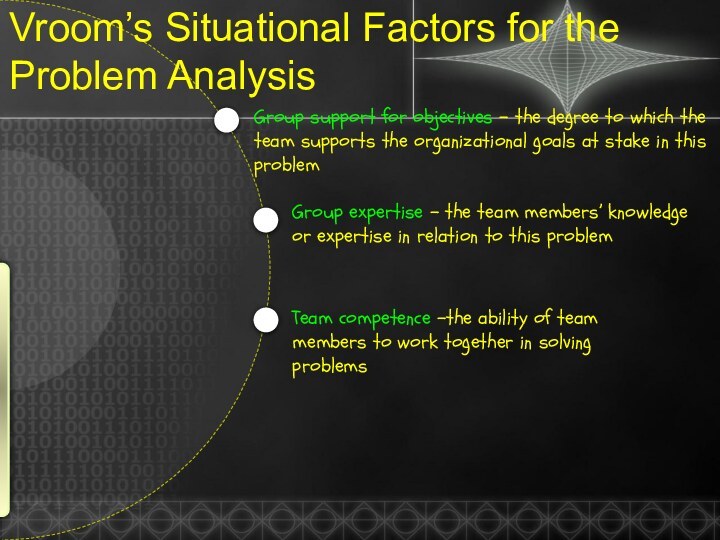


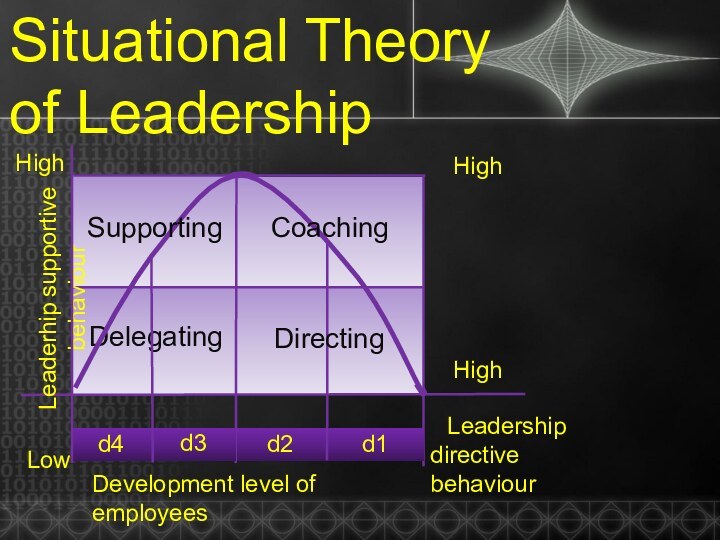

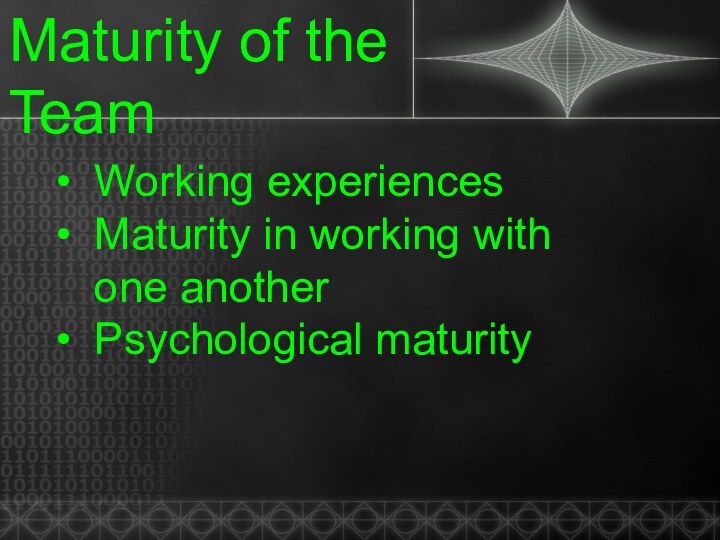
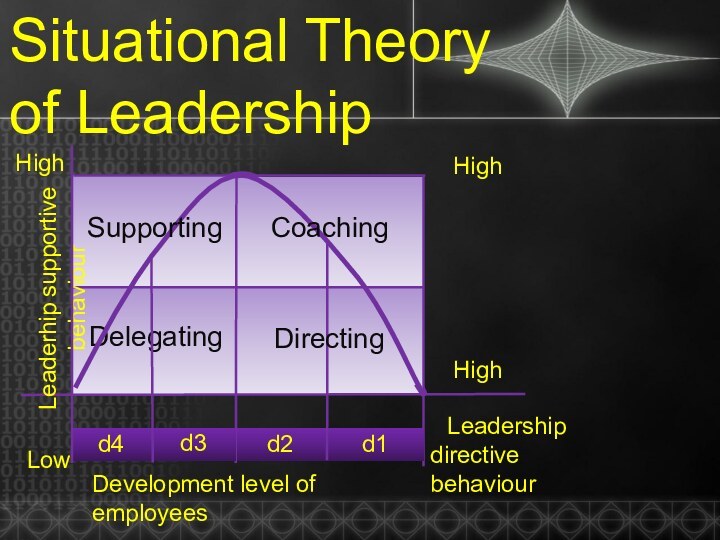
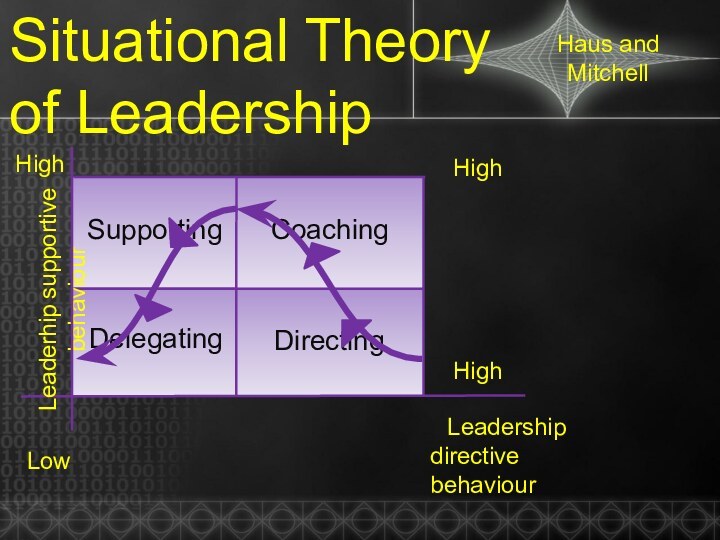
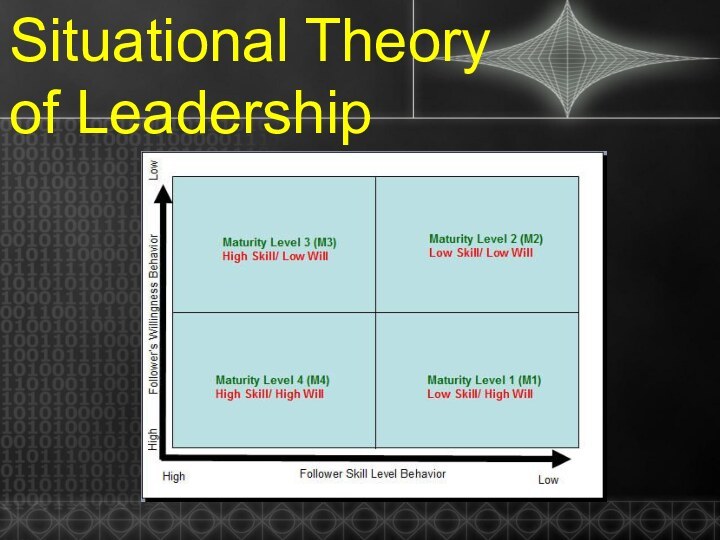

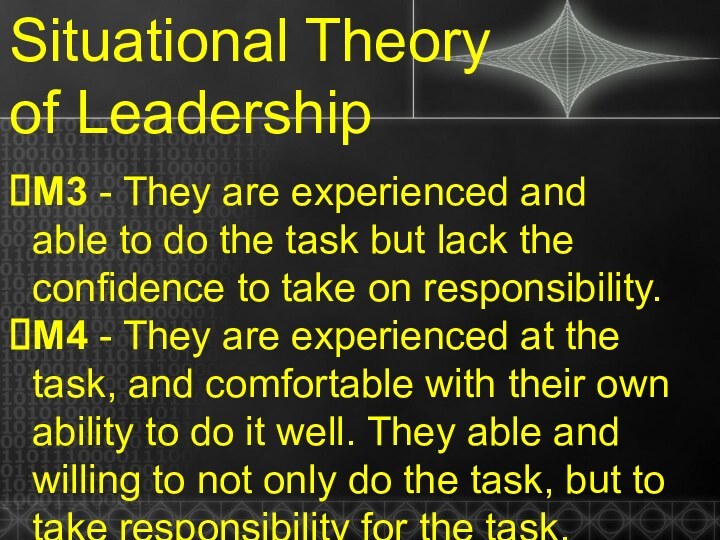
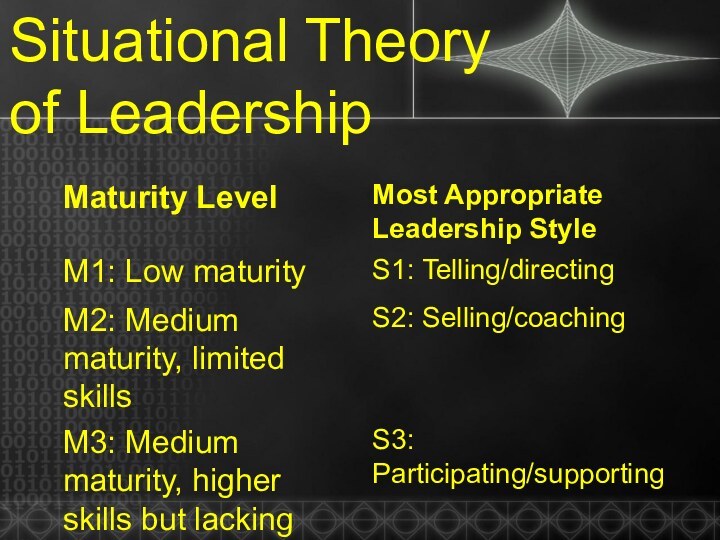

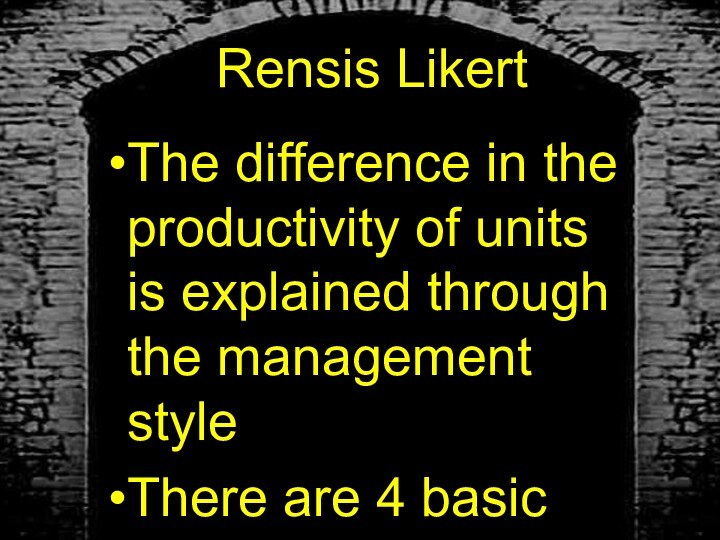
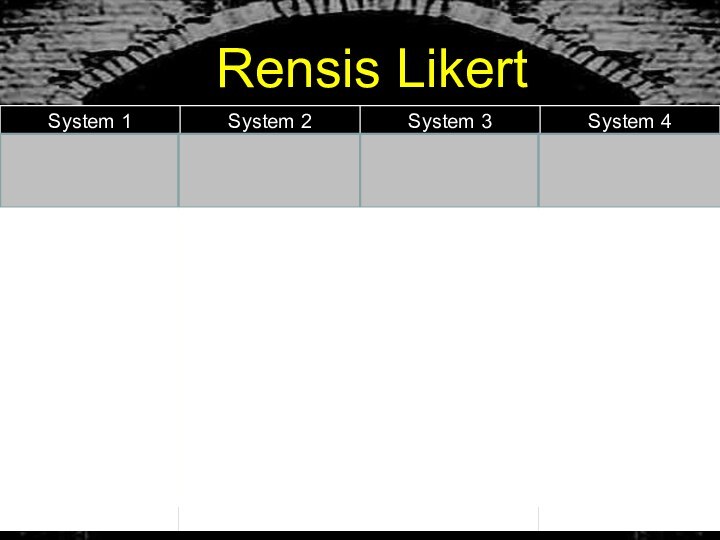
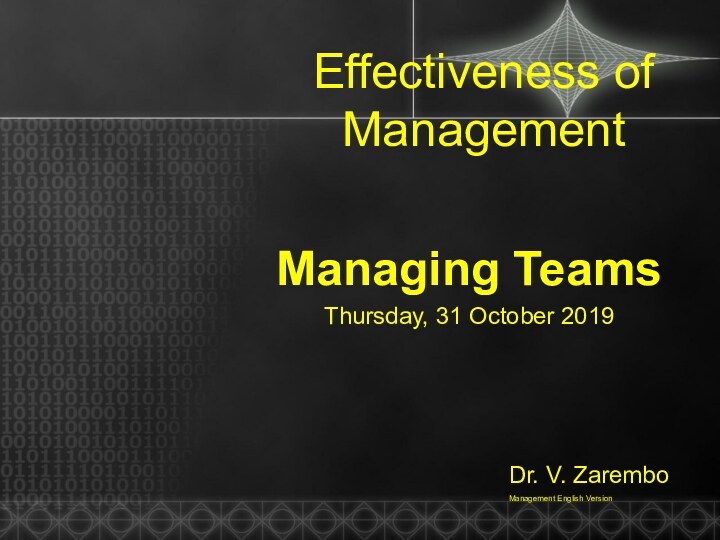
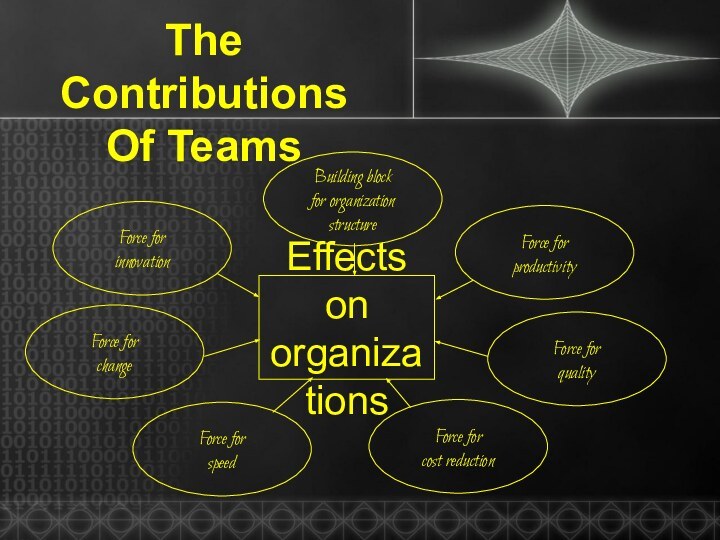
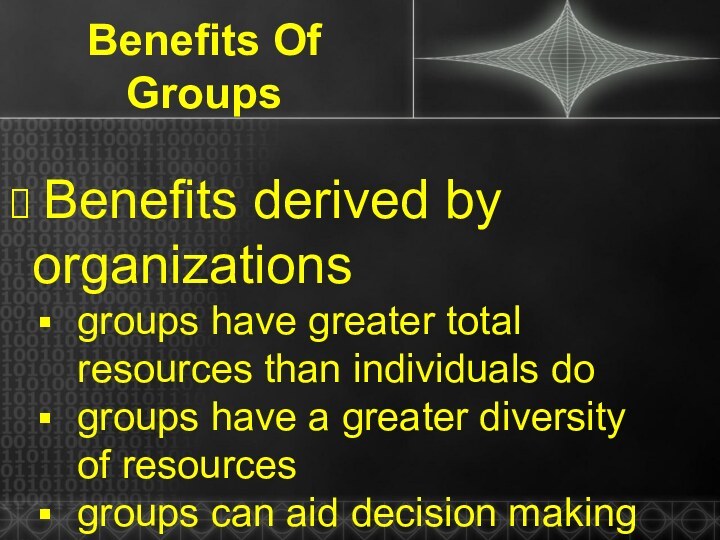
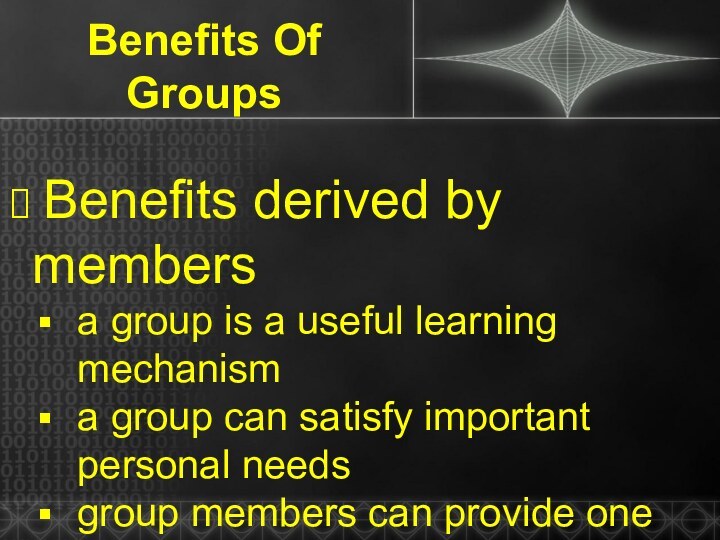
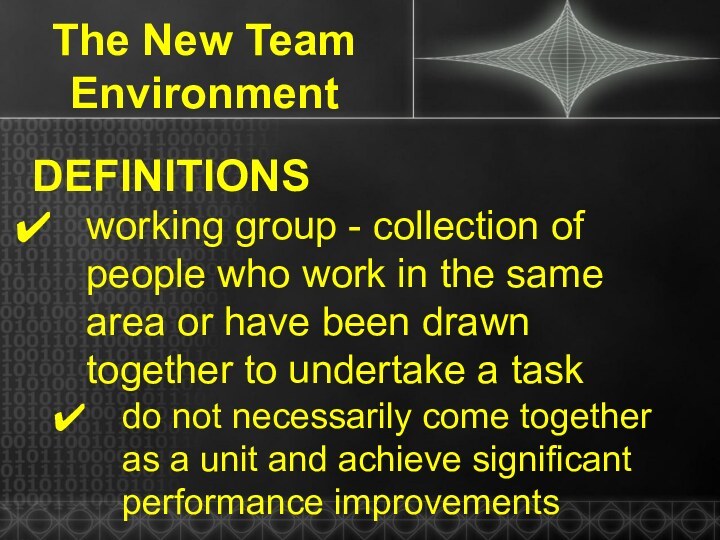
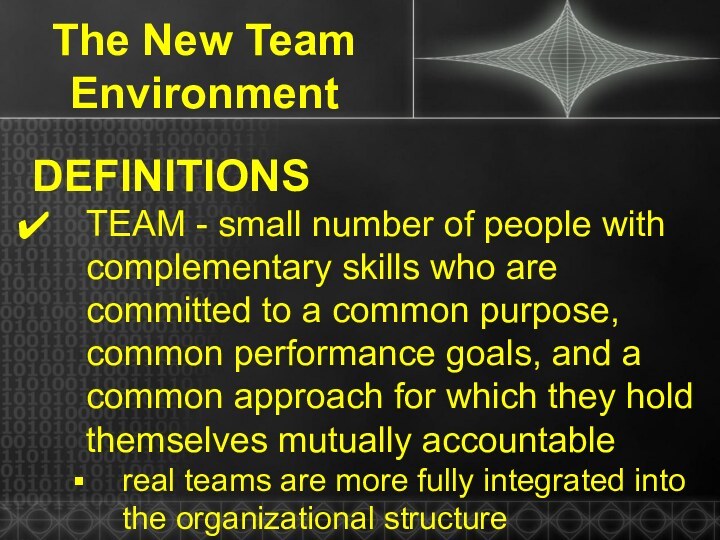

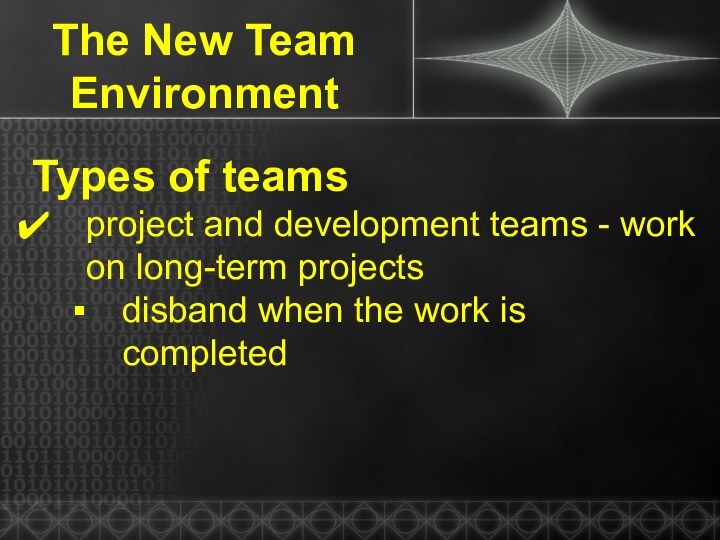
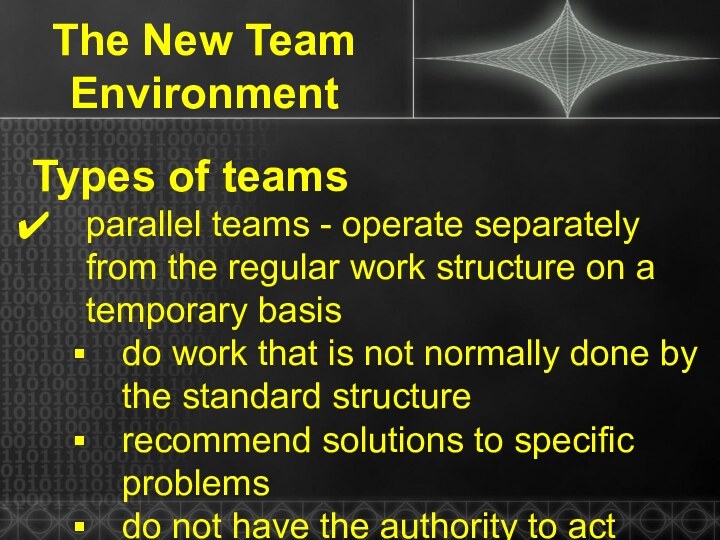




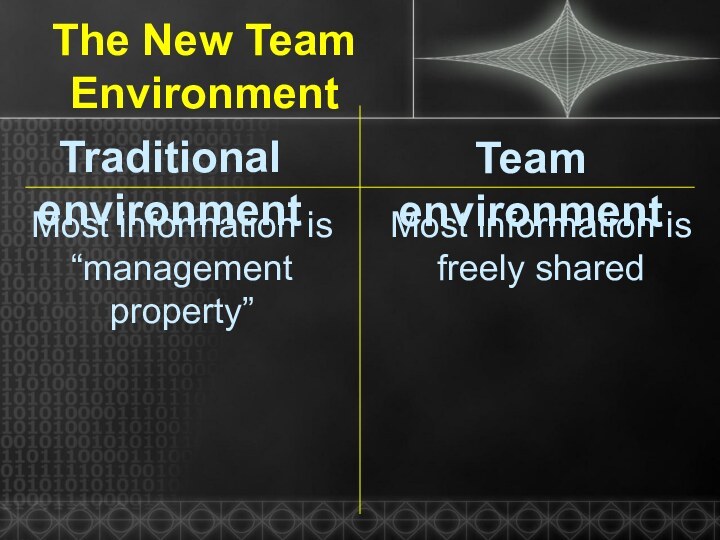
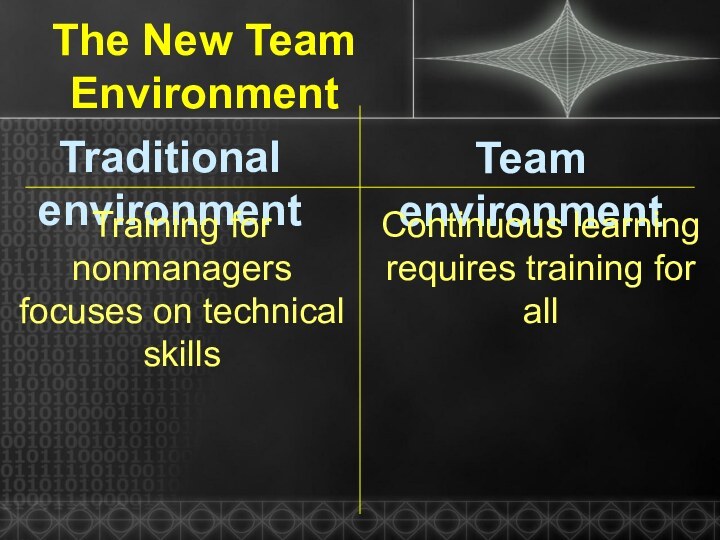
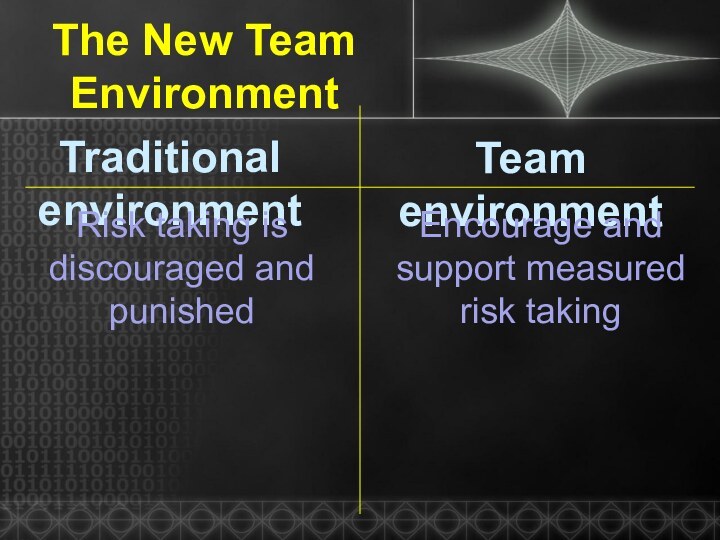


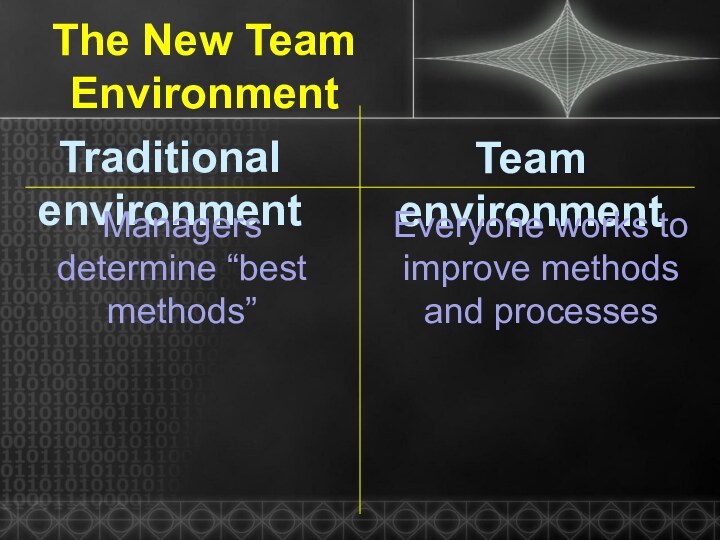
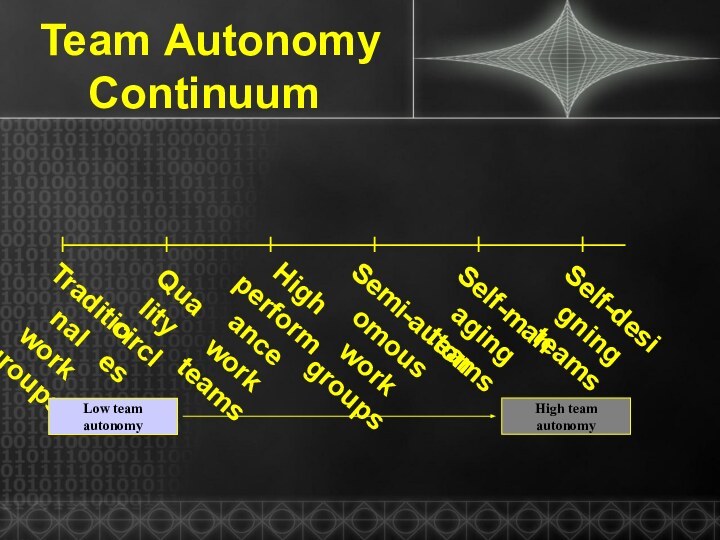
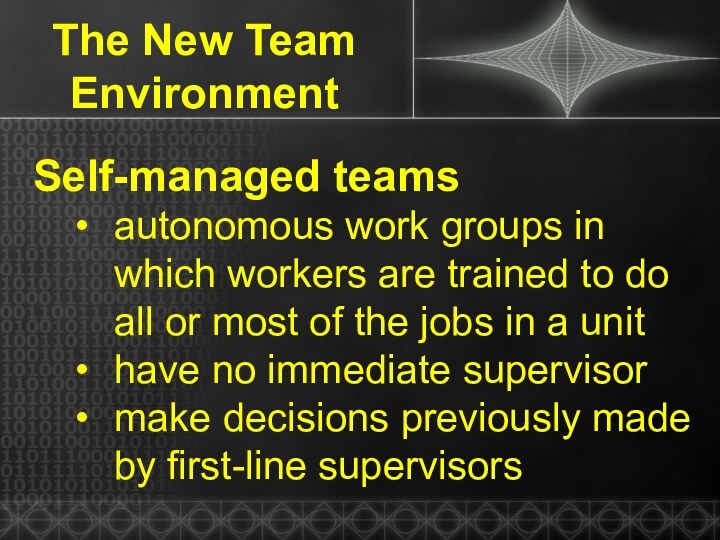
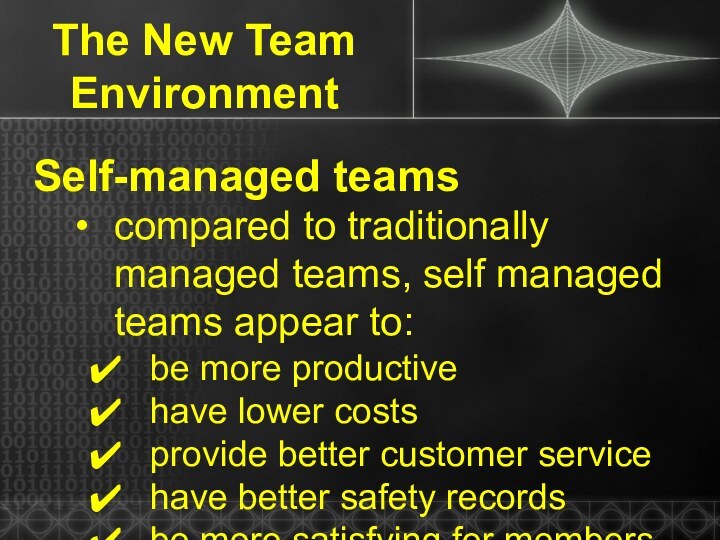
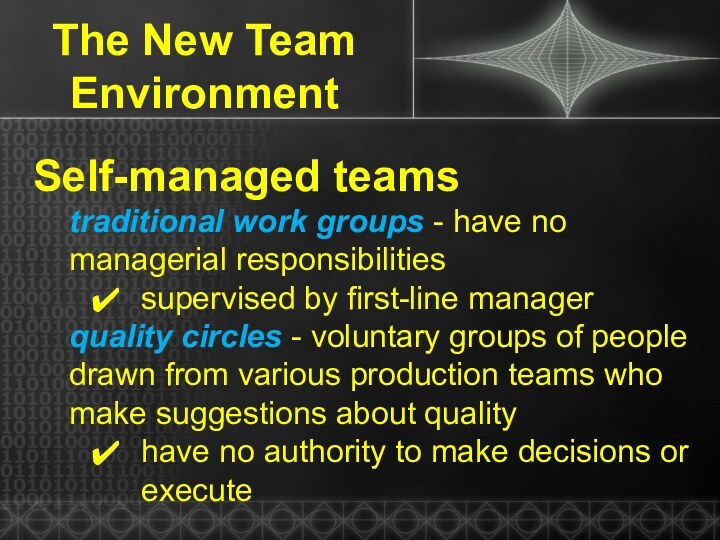
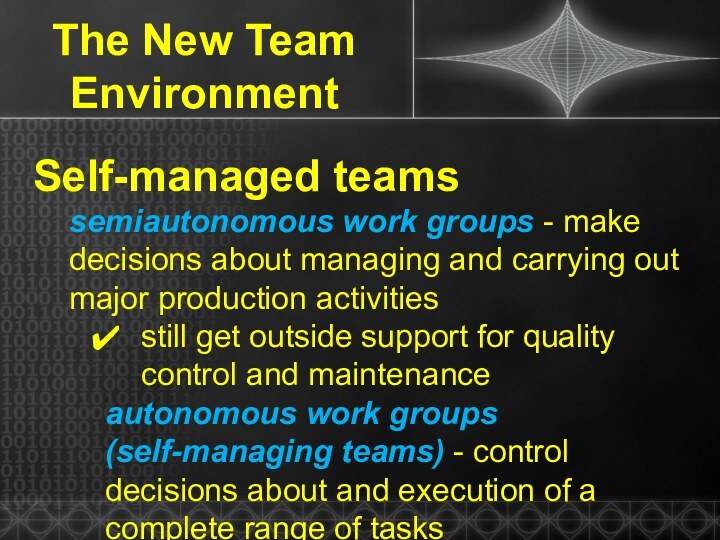
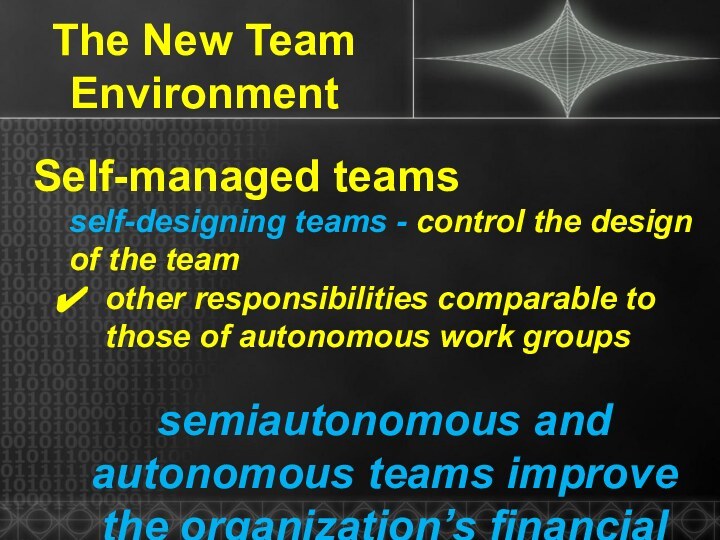
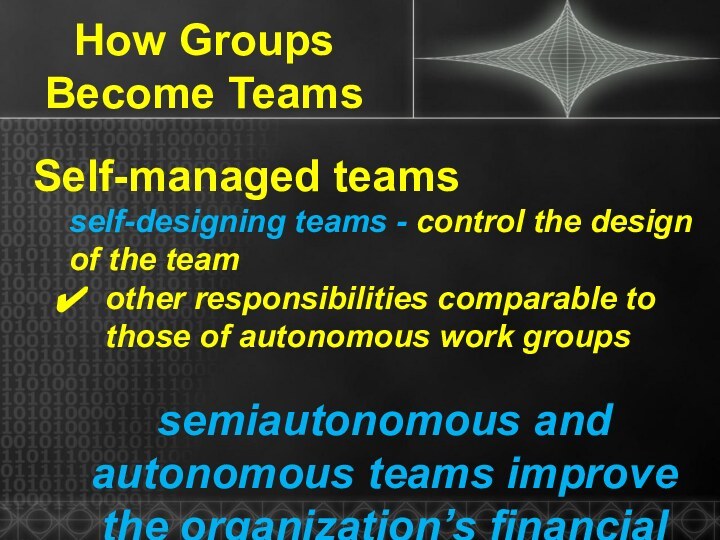

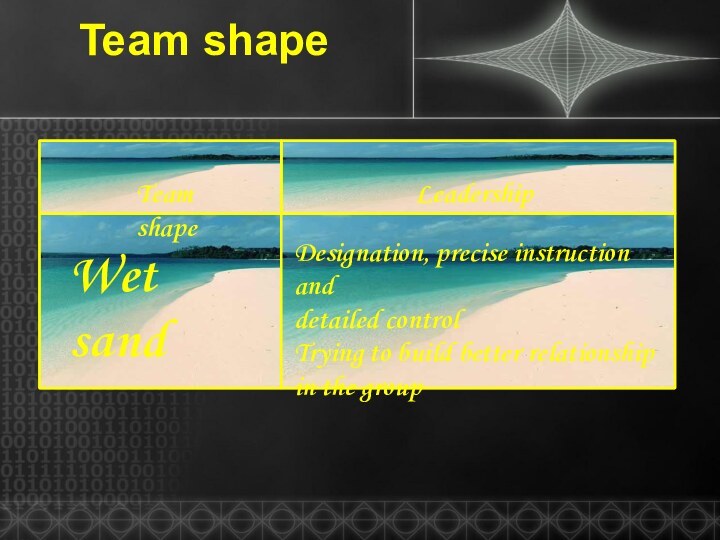
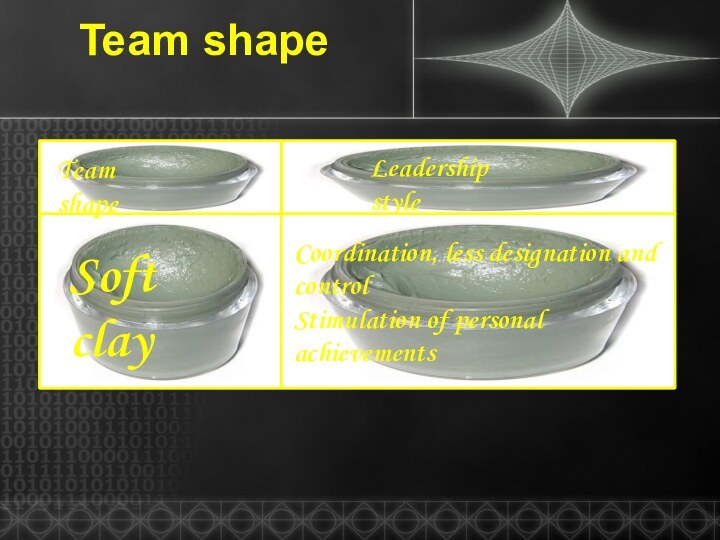
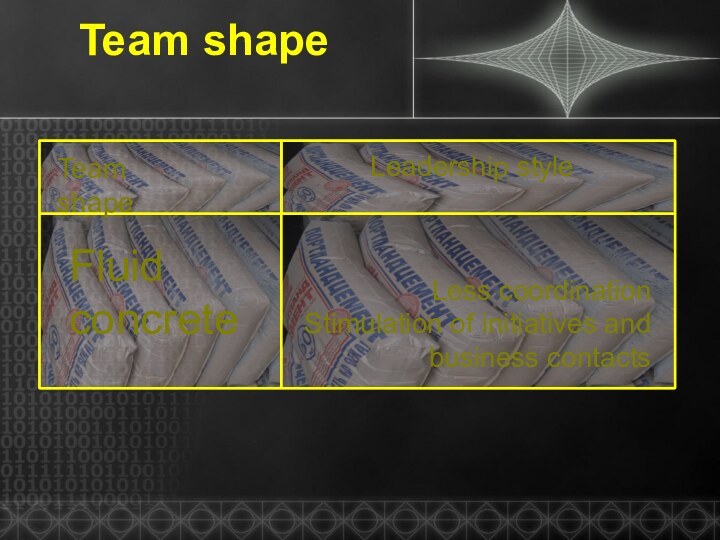
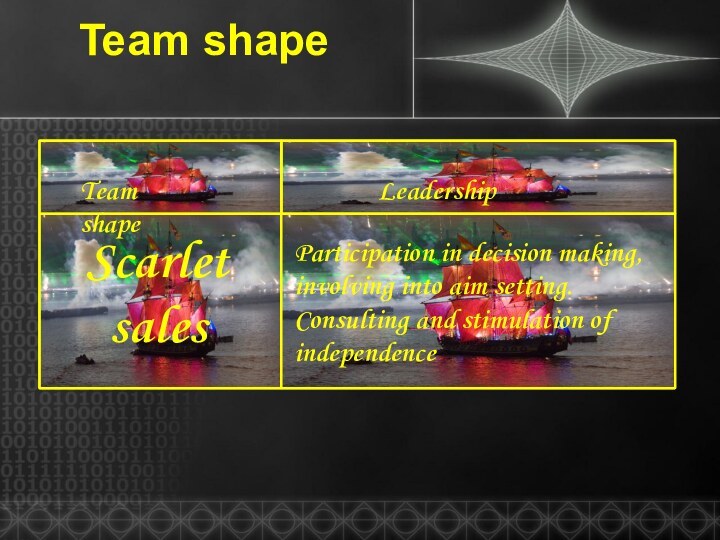

Слайд 3
Power Definition, Features
Potential by the possessor
Interconnection
between the powerful and powered
freedom in actions
Слайд 5
Power
Legitimate power –comes from the belief that
a person has the right to make demands, and
expect compliance and obedience from othersCoercive power – based on dependency and fear
Reward power – results from one person's ability to compensate another for compliance
French and raven
Слайд 6
Power
Expert power – This is based on
a person's superior skill and knowledge.
Referent power –
This is the result of a person's perceived attractiveness, worthiness, and right to respect from others. French and raven
Слайд 7
Power Sources
Power
Personal basis
Organizational basis
Expert power
Power of example
Right
for power
Power of information
Need for power
Decision
making Compensation
Compulsory
Power over resources
Power of connections
Слайд 8
Power Staging
Expert power
Power of example
Right for power
Power of
information
Need for power
Decision making
Compensation
Compulsory
Power
over resources Power of connections
Power
Personal basis
Organizational basis
Слайд 9
Relationship between power sources
Choice of the influencing
strategy
Influencing upon the others
Power
Personal basis
Organizational basis
Power Staging
Слайд 12
Effective leadership
Most effective combination of all the sources
of power
Official sources of power
Leaders’ behavior –
influence upon the others Result:
Highest satisfaction
Highest quality
Highest level of working
Personal sources of power
Слайд 13
Effective leadership
Also dependent on:
Organizational culture
Used technologies
Expectancy
of using some defined leadership style
Satisfaction of working
with leader of some special style
Слайд 14
Effective leader Trends
Trend to support the employees and
develop good relationship with them
Group managing, not individual
Highest
level of working and tensed tasks
Слайд 15
Effective leader Managing abilities
Managing attention
Managing meanings
Managing trust
and confidence
Self-management
Слайд 16
Studying Leadership
Kind 2. Analysis of the leadership behavior
without situation consideration
Kind 3.
Situation analysis of the effective
behavior of the leader Kind 1. Analysis of the leadership qualities without situation consideration
Behavior
dynamics
Strong behavior
Weak behavior
Situation consideration
Not consideration
Right consideration
Kind 4.
Situation analysis of the character of the effective leader
Слайд 17
Leadership Behavior
Punishment for working fulfillment level.
Compensation for
working fulfillment level.
Punishment without consideration of the working
fulfillment level.Behavior
dynamics
Situational
No consideration of situation
Behavior changing through…
Punishment
Compensation
Compensation without consideration of the working fulfillment level.
Слайд 18
Leadership Styles
Main characteristics of the manager behaviour during
the management process
Слайд 20
Contemporary Perspectives On
Leadership
Charismatic leadership
Transactional leadership
Transformational leadership
Post-heroic leadership
Слайд 21
Leadership Kinds
dominant and exceptionally self-confident, with a strong
conviction in the moral righteousness of their beliefs
communicate high
expectations for and confidence in followersarticulates ideological goals
inspire their followers’ trust, confidence, acceptance, obedience, emotional involvement, affection, admiration, and higher performance
Charismatic
leadership
Слайд 22
Leadership Kinds
traditional management through business transactions
leaders who
manage through using their legitimate, reward, and coercive powers
to give commands and exchange rewards for services rendereddispassionate leadership that does not inspire people to focus on the interests of the organization
Transactional leadership
Слайд 23
Leadership Kinds
moves beyond transactional leadership
transforms a vision into
reality and motivates people to transcend their personal interests
for the good of the groupTransformational leadership
Слайд 24
Leadership Kinds
generating excitement - three ways
they are
charismatic
provide individualized attention - do not treat everyone alike
they
are intellectually stimulating - arouse an awareness of problems and potential solutionsTransformational leadership
Слайд 25
Leadership Kinds
even great top executives can’t solve all
problems on their own
effective leadership must permeate the organization
Post-heroic
leadership
Слайд 27
Leadership Styles
Use of authority by managers
Authocratic
Democratic
Liberal
Freedom of
Subordinates
Слайд 28
Leadership Styles
Important
Motivation
Style
Characteristics
Authoritarian
Democratic
Liberal (club)
Delegation
Demands
Results only
Results and
methods
Results not important
Implicit obedience
Economic and social psychological
Almost missing
Not
includedActively by sense
Participation mirage
Very high level
Combined with trust
Low level
Слайд 30
Managerial grid
Concern for people
Concern for production
Blake Mouton Grid
High
Low
High
High
Country
club
Team leader
Impoverish
Produce or Perish
Middle of the Road
Слайд 31
Situational Theory of Leadership
Leadership style depends on situation
and maturity level of the group
P. Hersey and K.
Blanchard
Слайд 32
Situational Theory of Leadership
leadership perspectives proposing that universally
important traits and behaviors do not exist, and that
effective leadership behavior varies from situation to situationrequires the leader to first analyze the situation and then decide what to do
Слайд 33
Situational Theory of Leadership
Three factors must be considered
before deciding how to lead:
forces in the manager
forces in
the subordinateforces in the situation
N.B. arguments remain valid today
Tannenbaum and schmidt
Слайд 34
Situational Theory of Leadership
focuses on how leaders go
about making decisions
seven situational factors used to analyze problems
each
based on a problem attributescored as either high or low
Vroom
Слайд 35
Situational Theory of Leadership
answering a series of questions
about the problem attributes leads one to 14 possible
endpoints of the analysiseach endpoint recommends one of five decision styles
decision styles indicate that there are several shades of participation
use of the model ensures that important situational factors are considered
Vroom
Слайд 36 Decision Significance – significance for the success of
the project or organization
Importance of Commitment – importance of
the team members’ commitment to the decision makingLeader’s expertise – knowledge or expertise in relation to this problem
Likelihood of commitment – likelihood that the team would commit itself to a decision that the leader might make on his own
Vroom’s Situational Factors for the Problem Analysis
Слайд 37 Group support for objectives – the degree to
which the team supports the organizational goals at stake
in this problemGroup expertise – the team members’ knowledge or expertise in relation to this problem
Team competence –the ability of team members to work together in solving problems
Vroom’s Situational Factors for the Problem Analysis
Слайд 38
Situational Theory of Leadership
The leader should:
make the path
to work goals easier to travel by providing coaching
and directionreduce frustrating barriers to goal attainment
increase opportunities for personal satisfaction by increasing payoffs to people for achieving performance goals
Path goal framework
Слайд 39
Situational Theory of Leadership
Path goal framework
Appropriateness
of
Directive,
Supportive,
Participative, or
Achievement
leader behaviors
Followers’
goals and
performance
Слайд 40
Delegating
Situational Theory of Leadership
Leadership
directive behaviour
Leaderhip supportive behaviour
High
Low
High
High
Development level of employees
d4
d3
d2
d1
Supporting
Coaching
Directing
Слайд 42
Maturity of the Team
Working experiences
Maturity in working
with one another
Psychological maturity
Слайд 43
Delegating
Situational Theory of Leadership
Leadership
directive behaviour
Leaderhip supportive behaviour
High
Low
High
High
Development level of employees
d4
d3
d2
d1
Supporting
Coaching
Directing
Слайд 44
Delegating
Situational Theory of Leadership
Leadership
directive behaviour
Leaderhip supportive behaviour
High
Low
High
High
Supporting
Coaching
Directing
Haus and Mitchell
Слайд 46 M1 - They generally lack the specific skills
required for the job in hand and are unable
and unwilling to do or to take responsibility for this job or task.M2 - They are still unable to take on responsibility for the task being done; however, they are willing to work at the task.
Situational Theory of Leadership
Слайд 47 M3 - They are experienced and able to
do the task but lack the confidence to take
on responsibility.M4 - They are experienced at the task, and comfortable with their own ability to do it well. They able and willing to not only do the task, but to take responsibility for the task.
Situational Theory of Leadership
Слайд 50
Rensis Likert
The difference in the productivity of
units is explained through the management style
There are 4
basic systems
Слайд 54
Benefits Of Groups
Benefits derived by organizations
groups have
greater total resources than individuals do
groups have a greater
diversity of resourcesgroups can aid decision making
Слайд 55
Benefits Of Groups
Benefits derived by members
a group
is a useful learning mechanism
a group can satisfy important
personal needsgroup members can provide one another with feedback
identify opportunities for growth and development
train, coach, and mentor
Слайд 56
The New Team Environment
DEFINITIONS
working group - collection of
people who work in the same area or have
been drawn together to undertake a taskdo not necessarily come together as a unit and achieve significant performance improvements
Слайд 57
The New Team Environment
DEFINITIONS
TEAM - small number of
people with complementary skills who are committed to a
common purpose, common performance goals, and a common approach for which they hold themselves mutually accountablereal teams are more fully integrated into the organizational structure
authority of teams is increasing
Слайд 58
The New Team Environment
Types of teams
work teams -
make or do things like manufacture, assemble, sell, or
provide serviceare well defined and a clear part of the organization’s structure
composed of a full-time, stable membership
Слайд 59
The New Team Environment
Types of teams
project and development
teams - work on long-term projects
disband when the work
is completed
Слайд 60
The New Team Environment
Types of teams
parallel teams -
operate separately from the regular work structure on a
temporary basisdo work that is not normally done by the standard structure
recommend solutions to specific problems
do not have the authority to act
Слайд 61
The New Team Environment
Types of teams
management teams -
coordinate and provide direction to subunits under their jurisdiction
integrate
work among subunitsauthority based on hierarchical rank
responsible for the overall performance of the business unit
Слайд 62
The New Team Environment
Traditional environment
Team environment
Managers determine and
plan the work
Managers and teams jointly determine and plan
the work
Слайд 63
The New Team Environment
Traditional environment
Team environment
Jobs are narrowly
defined
Jobs require broad skills and knowledge
Слайд 64
The New Team Environment
Traditional environment
Team environment
Cross-training is viewed
as
inefficient
Cross-training is the norm
Слайд 65
The New Team Environment
Traditional environment
Team environment
Most information is
“management property”
Most information is freely shared
Слайд 66
The New Team Environment
Traditional environment
Team environment
Training for nonmanagers
focuses on technical skills
Continuous learning requires training for all
Слайд 67
The New Team Environment
Traditional environment
Team environment
Risk taking is
discouraged and punished
Encourage and support measured risk taking
Слайд 68
The New Team Environment
Traditional environment
Team environment
People work alone
People
work together
Слайд 69
The New Team Environment
Traditional environment
Team environment
Rewards based on
individual
performance
Rewards based on contributions to the
team and individual performance
Слайд 70
The New Team Environment
Traditional environment
Team environment
Managers determine “best
methods”
Everyone works to improve methods and processes
Слайд 71
Team Autonomy Continuum
Traditional
work groups
Self-designing
teams
Quality
circles
Semi-autonomous
work groups
High
performance
work teams
Self-managing
teams
Слайд 72
The New Team Environment
Self-managed teams
autonomous work groups in
which workers are trained to do all or most
of the jobs in a unithave no immediate supervisor
make decisions previously made by first-line supervisors
Слайд 73
The New Team Environment
Self-managed teams
compared to traditionally managed
teams, self managed teams appear to:
be more productive
have lower
costsprovide better customer service
have better safety records
be more satisfying for members
Слайд 74
The New Team Environment
Self-managed teams
traditional work groups -
have no managerial responsibilities
supervised by first-line manager
quality circles -
voluntary groups of people drawn from various production teams who make suggestions about qualityhave no authority to make decisions or execute
Слайд 75
The New Team Environment
Self-managed teams
semiautonomous work groups -
make decisions about managing and carrying out major production
activitiesstill get outside support for quality control and maintenance
autonomous work groups (self-managing teams) - control decisions about and execution of a complete range of tasks
fully responsible for an entire product or an entire part of a production process
Слайд 76
The New Team Environment
Self-managed teams
self-designing teams - control
the design of the team
other responsibilities comparable to those
of autonomous work groupssemiautonomous and autonomous teams improve the organization’s financial and overall performance
Слайд 77
How Groups Become Teams
Self-managed teams
self-designing teams - control
the design of the team
other responsibilities comparable to those
of autonomous work groupssemiautonomous and autonomous teams improve the organization’s financial and overall performance
Слайд 79
Team shape
Leadership style
Wet sand
Designation, precise instruction and
detailed control
Trying to build better relationship
in the group
Team
shape
Слайд 80
Team shape
Leadership style
Soft clay
Coordination, less designation and
control
Stimulation of personal achievements
Team shape
Слайд 81
Team shape
Leadership style
Fluid concrete
Less coordination
Stimulation of initiatives
and business contacts
Team shape
Слайд 82
Team shape
Leadership style
Scarlet
sales
Participation in decision
making, involving into aim setting.
Consulting and stimulation of
independence Team shape


